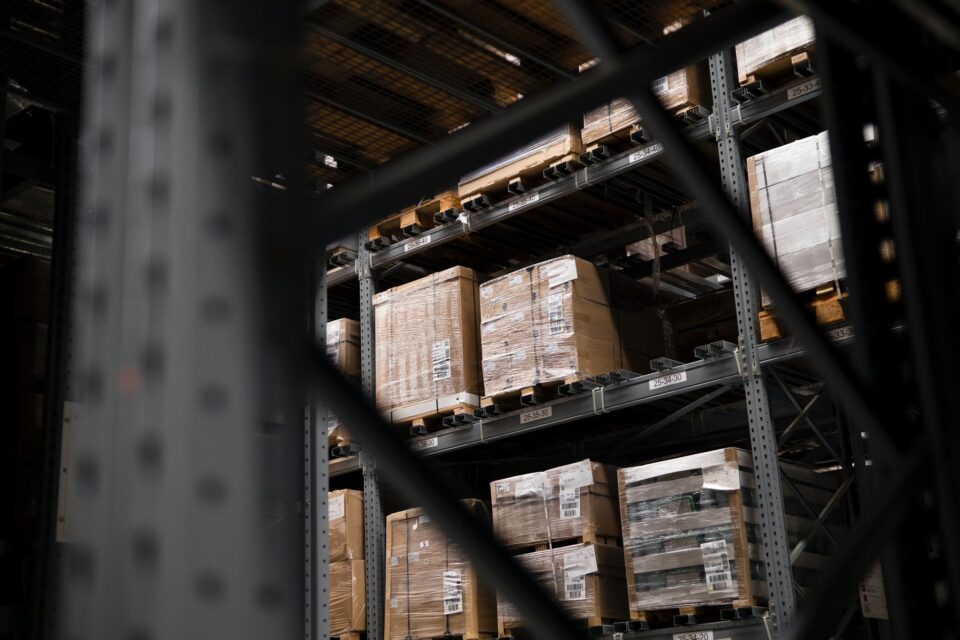
How Vendor Managed Inventory (VMI) Strengthens Supply Chain Resilience and Collaboration
To optimize inventory management, retailers and suppliers are increasingly turning to Vendor Managed Inventory (VMI) tools that transfer the responsibility…
Generix Ushers in a New Era of Intelligent Commerce for Retailers with AI-Driven Innovation Read the press release

A Warehouse Management System (WMS) like the SOLOCHAIN marketed by Generix Group North America is a software application designed to streamline and thus optimize warehouse operations. A WMS provides real-time inventory visibility, automates inventory management processes, and consolidates order fulfillment. The SOLOCHAIN WMS can be implemented on-premise, as SaaS (on the cloud), or deployed on a hybrid structure. Each type of implementation has its own unique features and benefits. If you want to know which is best adapted to your needs, you can take a look at this article.
There are many advantages to deploying a WMS in your warehouse or distribution center, from more efficient time management to improved inventory accuracy to reduced labor costs and improved order fulfillment. Other benefits include: Increased productivity and efficiency – The SOLOCHAIN WMS by Generix Group automates key processes, reducing the amount of time employees spend on manual data entry. As a result, it speeds up workflows and improves an operation’s throughput capacity. Reduced costs – A WMS helps reduce operating costs in a number of ways. By providing accurate visibility on inventory in real-time, for instance, it enables advanced inventory management strategies that maximize storage capacity, resulting in savings and better cash-flow management. Enhanced customer satisfaction – The SOLOCHAIN WMS supports employees on the floor to enable faster and more accurate order fulfillment processes, leading to improved customer satisfaction. Data-driven decisions – Generix Group enables warehouse managers to make data-driven decisions with a WMS that provides detailed real-time information and analytics at a glance, thanks to user friendly interfaces. Compliance with customer and regulatory requirements – The SOLOCHAIN WMS by Generix Group can be configured to account for customer and regulatory requirements. By providing employees accurate instructions on a case by case basis, the WMS enables error free inventory management and order fulfillment, reducing the risk of unsatisfied customers and costly fines.
It’s easy to be overwhelmed by the vast range of options on the WMS market. Looking to Gartner’s Magic Quadrant for WMS for some guidance, warehouse managers will quickly find that all leading WMS solutions seemingly offer the same core functionalities. Upon closer inspection, however, they’ll find that some solutions are better adapted to fully automated warehousing environments, while others prove a better fit in operations that are not so technologically mature. It’s important to choose the right WMS in order to maximize its impacts on your operation and achieve better ROI. To select the system best adapted to your processes and needs, consider the following factors: Define and gather your requirements – It’s important to list all of your requirements to determine which WMS functionalities you need and identify the solution that best fits the bill. This is true even if you’ve already decided on a WMS solution. The SOLOCHAIN WMS, for example, is built on a modular architecture that makes it possible for companies to enable only the functionalities they immediately require. Other factors beyond WMS functionalities – Before you decide where to invest your precious capital, you will want to consider other factors such as the cost of the system, necessary infrastructure investments, scalability, ease of use, and integration capabilities. For example: younger, less technologically mature operations with limited access to capital may fare better with a highly adaptable system deployed on the cloud such as the SaaS version of the SOLOCHAIN WMS, by Generix Group. Evaluate and compare different WMS solutions – This is better achieved by means of an RFP. If you don’t know what an RFP for a WMS should include, you can read this article[OM1] experts have Generix Group have written on the topic. You can also leverage the RFP template developed by Generix Group North America.
The implementation of a WMS requires careful planning and execution. Here are some considerations and steps you can take to achieve the successful implementation of your new WMS: 1. Develop a plan and timeline for WMS implementation, including milestones, benchmarks, and deadlines 2. Plan rigorously for the integration of the WMS with your other systems, such as ERP, MES, TMS, and eCommerce platforms 3. Train employees on how to use the WMS effectively to maximize efficiency—and ROI—from Go Live 4. Involve employees throughout the implementation process to ensure staff confidence in the wisdom of adopting a new system, which leads to greater user-acceptance 5. Maintain open and efficient communication lines with your WMS provider to ensure that all parties are aligned, and that the system’s implementation is as efficient and error-free as possible 6. Perform regular tests during the implementation process to identify and address any issues that arise. There’s of course much more that goes into a WMS implementation. Take a look at this article to discover—and avoid—the most common mistakes that stand in the way of a successful Go Live.
A warehouse management system like the SOLOCHAIN WMS by Generix Group provides significant benefits to supply chain operators. As we have seen, a WMS increases productivity, reduces operating costs, and sets the stage for improved customer satisfaction. Our experts at Generix Group North America are on hand to answer your questions and help you plan the selection and implementation of a new WMS. Contact us to schedule an appointment with our engineers.

To optimize inventory management, retailers and suppliers are increasingly turning to Vendor Managed Inventory (VMI) tools that transfer the responsibility…

In an ever-evolving logistics environment, agile and precise warehouse resource management is essential to remain competitive. With increasing volumes driven…

France’s electronic invoicing reform relies on a Y-architecture, where Partner Dematerialization Providers (PDPs) play a central role in issuing and…

Work with our team to build your ideal supply chain software stack and tailor it to your unique business needs.